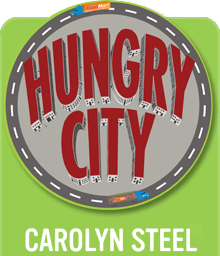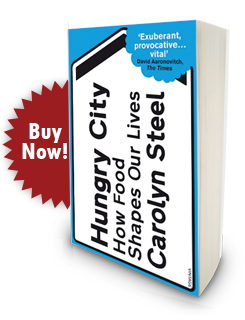1. The Land
Listen to this podcast:
Chapter One is about the land where most of our food is grown, and our relationship with it. It deals with what I call the ‘urban paradox’: the fact that although most of us live in cities, in a deeper sense we really dwell on the land, relying as much on the natural world to feed us as our ancient ancestors did. The ‘paradox’ comes from fact that we fail to recognise this.
We admire the beauty of untouched wilderness, but ignore the true productive landscapes we create, instead constructing fantasies about the sort of ‘countryside’ we’d like to imagine just beyond our urban borders. The fluffy sheep and golden meadows of Pastoralism are part of that trend; as are the noble firs and soaring peaks of Romanticism. Of course both are an illusion. ‘Constable Country’ and the rest are as much urban constructs as the cities that created them – even the notion of ‘countryside’ itself could be called an urban construct.
None of this is new: cities have been moulding nature in their own image for centuries, and kidding themselves about the consequences. The only difference now is that industrialisation has made food production invisible, increasing the scale of our delusion – and the scale of our destruction. With cities already consuming an estimated 75% of the world’s resources, and the number of people living in them due to double by 2050, we need to stop seeing nature down a one-way telescope. Food is what connects the city to the countryside, and we must start using it as a way of seeing that both are vitally connected – that you can’t have one without the other.













June 27th, 2010 at 10:29 am
I love your book!
In chapter 6, waste is discussed.
I wonder what could be (environmentally) better: To use sewage for fertilizing land or to use it as fuel in the incinerator to make electricity and heat.
In the old days it was the habit to use sewage to fertilize the land. On page 256 China is mentioned and in 1869 in Gennevilliers, near Paris the first municipal sewage farm was set up to free the city from stinking sewage and polluting the Seine river. (p277) (The circle is round…)
In Amsterdam and other western cities the remains of the water-waste treatment facility is burned in the incinerator to make electricity and heat. This reduces the use of natural gas for electricity and heating. But in the mean time we produce lots of artificial fertilizer out of natural gas and we import guano or mineral rich soil from Israel to turn it into fertilizers. The dessert fertilizes the European country.
June 17th, 2016 at 6:42 am
This is the right site for anybody who wants to understand this topic.
You understand a whole lot its almost tough to argue with
you (not that I actually would want to…HaHa).
You definitely put a new spin on a subject that’s been written about for decades.
Excellent stuff, just wonderful!